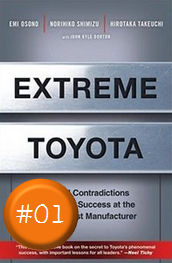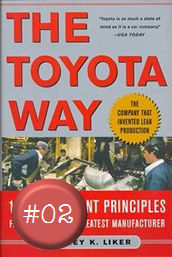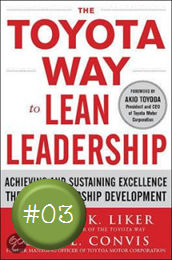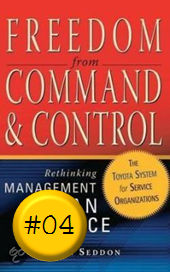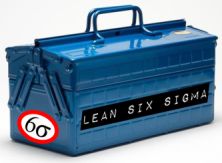IASSC geeft aan welke eisen gelden voor Lean Six Sigma Green Belt certificering ('Universally Accepted Lean Six Sigma Body of Knowledge for Green Belts'). De officiële toets bestaat uit een 3 uur durend - open boek - examen waarin 100 multiple choice vragen moeten worden beantwoord.
Ik ben zelf in opleiding voor Lean Grean Belt en gebruik de onderstaande 'Body of Knowledge (BOK)' als kapstok voor het verzamelen van alles wat ik moet weten voor het examen.
0.0 Lean Six Sigma improvement methodology (DMAIC, Define, Measure, Analyze, Improve & Control)
1.0 Define Phase
1.1 The Basics of Six Sigma
1.1.1 Meanings of Six Sigma
1.1.2 General History of Six Sigma & Continuous Improvement
1.1.3 Deliverables of a Lean Six Sigma Project
1.1.4 The Problem Solving Strategy Y = f(x)
1.1.5 Voice of the Customer (VOC), Voice of the Business (VOB) and Voice of the Employee (VOE)
1.1.6 Six Sigma Roles & Responsibilities
1.2 The Fundamentals of Six Sigma
1.2.1 Defining a Process
1.2.2 Critical to Quality Characteristics (CTQ’s)
1.2.3 Cost of Poor Quality (COPQ)
1.2.4 Pareto Analysis (80:20 rule)
1.2.5 Basic Six Sigma Metrics
- DPU
- DPMO
- FTY
- Rolled Throughput Yield (RTY)
- Cycle Time
1.3 Selecting Lean Six Sigma Projects
1.3.1 Building a Business Case & Project Charter
1.3.2 Developing Project Metrics
1.3.3 Financial Evaluation & Benefits Capture
1.4 The Lean Enterprise
1.4.1 Understanding Lean
1.4.2 The History of Lean
1.4.3 Lean & Six Sigma
1.4.4 The Seven Elements of Waste
- Overproduction,
- Correction,
- Inventory,
- Motion,
- Overprocessing,
- Conveyance,
- Waiting
1.4.5 5S
- Straitghten,
- Shine,
- Standardize,
- Self-Discipline,
- Sort
2.0 Measure Phase
2.1 Process Definition
2.1.1 Cause & Effect / Fishbone Diagrams
2.1.2 Process Mapping, SIPOC, Value Stream Map
2.1.3 X-Y Diagram
2.1.4 Failure Modes & Effects Analysis (FMEA)
2.2 Six Sigma Statistics
2.2.1 Basic Statistics
2.2.2 Descriptive Statistics
2.2.3 Normal Distributions & Normality
2.2.4 Graphical Analysis
2.3 Measurement System Analysis (Meetsysteemanalyse; MSA)
2.3.1 Precision & Accuracy
2.3.2 Bias, Linearity & Stability
2.3.3 Gage Repeatability & Reproducibility
2.3.4 Variable & Attribute MSA
2.4 Process Capability
2.4.1 Capability Analysis
2.4.2 Concept of Stability
2.4.3 Attribute & Discrete Capability
2.4.4 Monitoring Techniques
3.0 Analyze Phase
3.1 Patterns of Variation
3.1.1 Multi-Vari Analysis
3.1.2 Classes of Distributions
3.2 Inferential Statistics
3.2.1 Understanding Inference
3.2.2 Sampling Techniques & Uses
3.2.3 Central Limit Theorem
3.3 Hypothesis Testing
3.3.1 General Concepts & Goals of Hypothesis Testing
3.3.2 Significance; Practical vs. Statistical
3.3.3 Risk; Alpha & Beta
3.3.4 Types of Hypothesis Test
3.4 Hypothesis Testing with Normal Data
3.4.1 1 & 2 sample t-tests
3.4.2 1 sample variance
3.4.3 One Way ANOVA
a. Including Tests of Equal Variance, Normality Testing and Sample Size calculation, performing tests and interpreting results.
3.5 Hypothesis Testing with Non-Normal Data
3.5.1 Mann-Whitney
3.5.2 Kruskal-Wallis
3.5.3 Mood’s Median
3.5.4 Friedman
3.5.5 1 Sample Sign
3.5.6 1 Sample Wilcoxon
3.5.7 One and Two Sample Proportion
3.5.8 Chi-Squared (Contingency Tables)
a. Including Tests of Equal Variance, Normality Testing and Sample Size calculation, performing tests and interpreting results.
4.0 Improve Phase
4.1 Simple Linear Regression
4.1.1 Correlation
4.1.2 Regression Equations
4.1.3 Residuals Analysis
4.2 Multiple Regression Analysis
4.2.1 Non- Linear Regression
4.2.2 Multiple Linear Regression
4.2.3 Confidence & Prediction Intervals
4.2.4 Residuals Analysis
4.2.5 Data Transformation, Box Cox
5.0 Control Phase
5.1 Lean Controls
5.1.1 Control Methods for 5S
5.1.2 Kanban
5.1.3 Poka-Yoke (Mistake Proofing)
5.2 Statistical Process Control (SPC)
5.2.1 Data Collection for SPC
5.2.2 I-MR Chart
5.2.3 Xbar-R Chart
5.2.4 U Chart
5.2.5 P Chart
5.2.6 NP Chart
5.2.7 X-S chart
5.2.8 CumSum Chart
5.2.9 EWMA Chart
5.2.10 Control Chart Anatomy
5.3 Six Sigma Control Plans
5.3.1 Cost Benefit Analysis
5.3.2 Elements of the Control Plan
5.3.3 Elements of the Response Plan
Bron: Universally Accepted Lean Six Sigma Body of Knowledge for Green Belts







